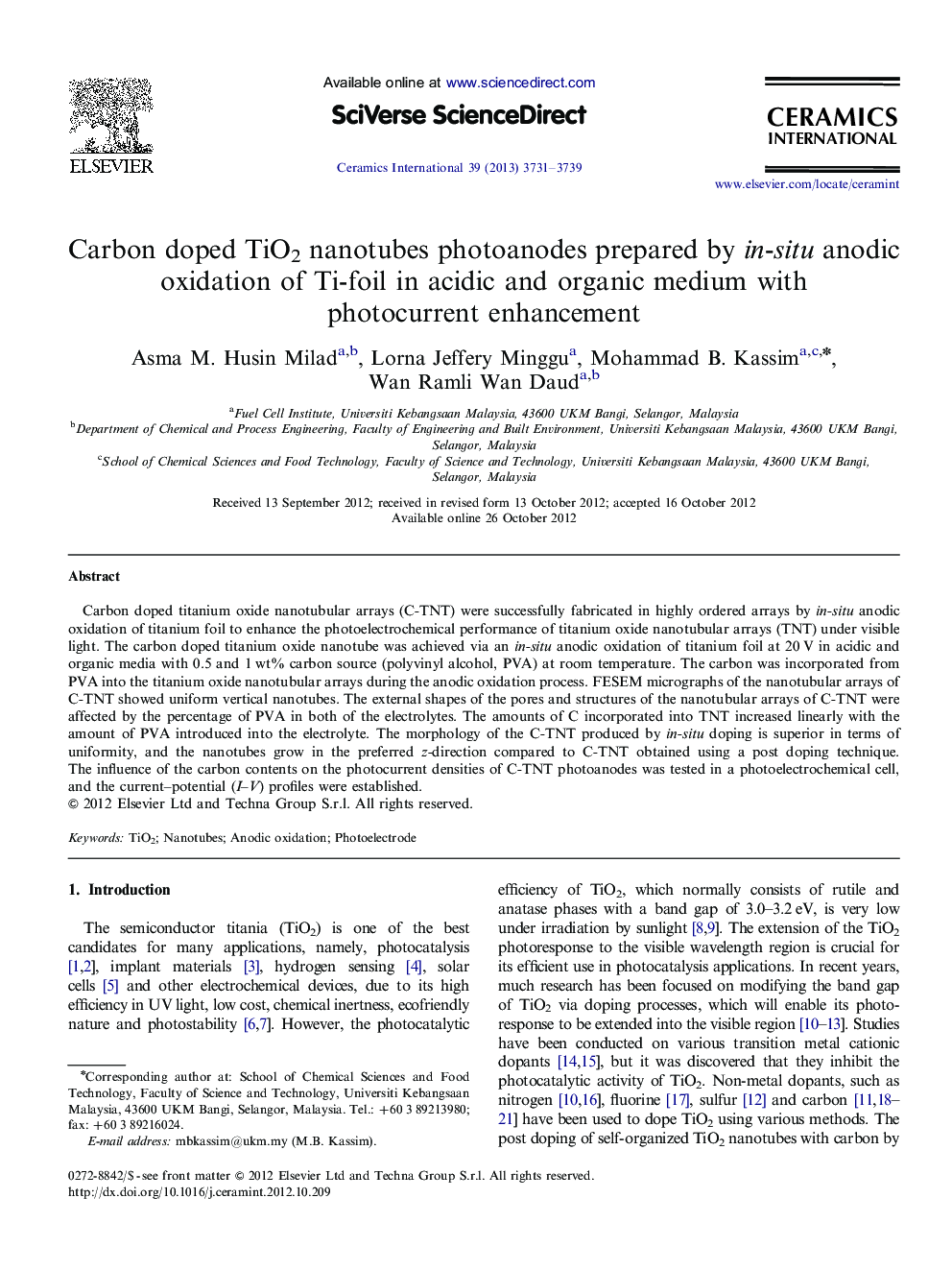| Article ID | Journal | Published Year | Pages | File Type |
|---|---|---|---|---|
| 1461738 | Ceramics International | 2013 | 9 Pages |
Carbon doped titanium oxide nanotubular arrays (C-TNT) were successfully fabricated in highly ordered arrays by in-situ anodic oxidation of titanium foil to enhance the photoelectrochemical performance of titanium oxide nanotubular arrays (TNT) under visible light. The carbon doped titanium oxide nanotube was achieved via an in-situ anodic oxidation of titanium foil at 20 V in acidic and organic media with 0.5 and 1 wt% carbon source (polyvinyl alcohol, PVA) at room temperature. The carbon was incorporated from PVA into the titanium oxide nanotubular arrays during the anodic oxidation process. FESEM micrographs of the nanotubular arrays of C-TNT showed uniform vertical nanotubes. The external shapes of the pores and structures of the nanotubular arrays of C-TNT were affected by the percentage of PVA in both of the electrolytes. The amounts of C incorporated into TNT increased linearly with the amount of PVA introduced into the electrolyte. The morphology of the C-TNT produced by in-situ doping is superior in terms of uniformity, and the nanotubes grow in the preferred z-direction compared to C-TNT obtained using a post doping technique. The influence of the carbon contents on the photocurrent densities of C-TNT photoanodes was tested in a photoelectrochemical cell, and the current–potential (I–V) profiles were established.
